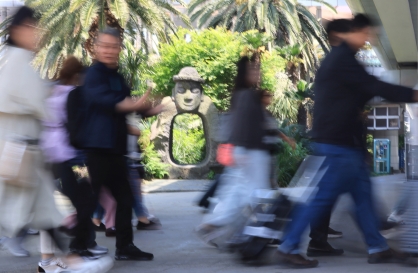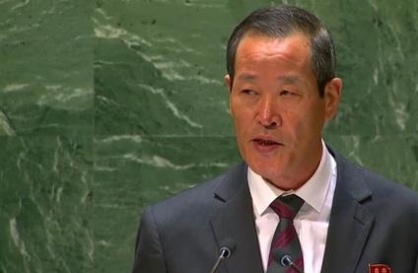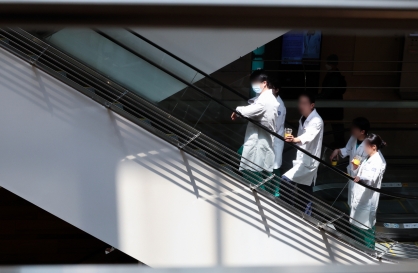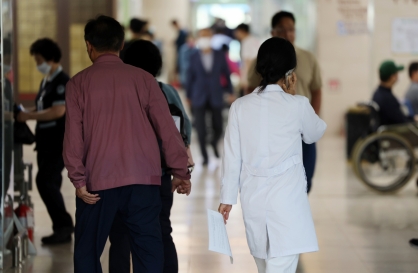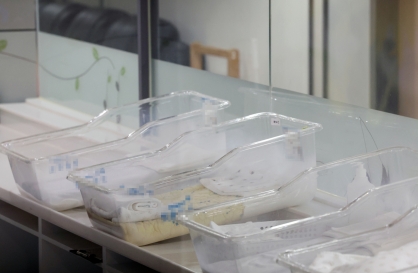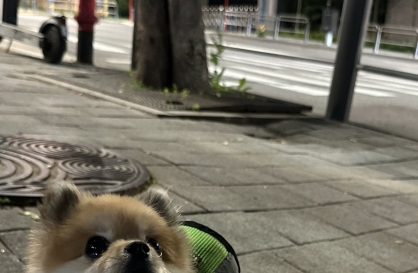Lee Young-kyo, an English teacher from Singil Middle School in Ansan, Gyeonggi Province, said his student surnamed Jang used to be a troublemaker.
But Jang’s attitude started to change, he said, after the first-year middle school student took part in the Green School program, a component of the government-driven free-learning semester designed to ease the burden of testing and aid students’ career planning.
Jang was never an elite student, but his good performance in the project ― a study about environmental protection ― boosted his confidence, which spilled over to other subjects as well, Lee said.
“It’s amazing how much he changed after he was recognized for his good performance in the Green School project,” Lee said. “In my opinion, that’s what the free-learning semester is about: Finding out what you’re good at by experiencing many different activities and learning to proactively educate yourself.”
The free-learning semester aims to allow students to prepare for their own future careers by taking a semester off to obtain vocational experience and programs instead of taking exams. Last year, the project was test-run for the first time in 42 middle schools.
The government’s bold reform was kicked into overdrive on Thursday, as the Education Ministry announced it would expand the current pilot system to 20 percent of all middle schools this year. The ministry plans to apply the test-free term to all middle schools by 2016.
The basic idea of the system is that once students take time to learn what they are good at and what they want to become in later life, they will be more motivated in classrooms.
“One of the biggest problems of the current education system is the motivation. The students do not understand why they have to study, but do it because they are told to,” said Park Seong-ik, a professor emeritus in the Department of Education at Seoul National University.
The current system makes a handful of winners and labels rest of the students “failures,” Park said. As a result, Korean students prevail in academic achievement but often lack motivation to study.
According to the 2013 Program for International Student Assessment by the OECD, Korean students rank at the top globally in math, science and reading. But they are near the bottom in terms of being motivated to learn.
“The students were not allowed time to find out what he or she is really good at, or to push themselves to study what they want,” Park said. “This means most students fall prey to the so-called ‘learned helplessness.’ Except for a handful of top students, most kids feel the pressure of having to keep up (the academic accomplishment) and lose confidence.”
He stressed the importance of students learning meaningful knowledge and information through various experiences, not just studying books. This is where the free-learning semester comes in.
“Fundamentally, it (free-learning semester) is a process of education finding its rightful place,” he said. “It’s about letting students proactively take control of his or her education.”
Educational experts like Park welcomed the idea of revamping Korea’s education system, which is mostly centered on simply getting good grades to go to prestigious universities.
The fledgling system is garnering positive reaction from students, too. An Education Ministry survey in December showed that the students’ satisfaction rate for the test-free term was 3.72 points out of 5, higher than 3.34 for the regular term.
“We got to experience a lot of different things. I experienced the job of a flight attendant and also was able to see what it was like to act on stage,” said Baek Dong-hun, a first-year middle school student. Another student named Han Min-hyuk said the free-learning semester gave him and his friends a chance to create short movies.
Jeong Seung-yeon, 13, shared how she visited a nearby art gallery and wrote an essay on a topic of her choice, quite a contrast from the usual rote memorizing for the “correct answers.”
While experts say the idea of letting students take the helm of their own education, rather than just blindly following instructions from teachers, seems ideal, they question whether it is feasible to implement the system in such a short period of time.
Kim Myung-soo, president of the Korean Educational Research Association, pointed out that similar projects in other countries that also provide work experience took decades to develop.
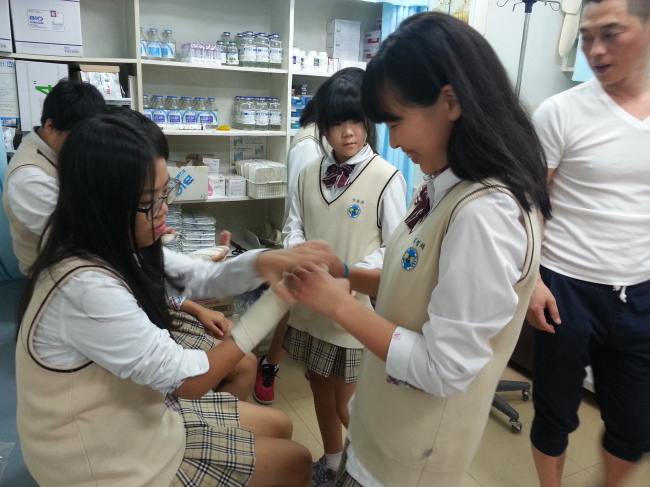 |
Students at Singil Middle School participate in a work experience program as part of the free-learning semester project. (Singil Middle School) |
“Ireland took 30 years to establish the infrastructure for its transition year system, which was the role model for the free-learning semester. However, Korea is planning to implement the free-learning semester in all middle schools in just three years,” he wrote in a column.
Kim said the free-learning semester is essential for the well-being of Korean students, which is why the government should work to make sure other parts of society cooperate to ensure the project’s success.
There is also the issue of persuading the parents.
Professor Park of SNU said one precondition to successfully implementing the free-learning semester is conveying its goal and importance to parents, many of whom think the test-free term will hurt their children’s chances of entering elite schools.
The Education Ministry survey showed that parents’ general satisfaction with the free-learning semester was 3.45 points, lower than that of the students and teachers, which stood at 3.88.
The thought process is simple: No tests and no studying would lead to a decline in academic ability.
“We are trying to change the parents’ perception through presentations and by getting them involved in the work experience program,” said Heo Eun-sook, who heads the free-learning semester program at Singil Middle school. She said although there are limits to what schools can do, the school feels obliged to present an ideal model for the new system.
Another problem for the teachers is their additional workload, as the burden of preparing extra programs for the free-learning semester mostly fell on them.
“Basically we have to teach our subjects, prepare for a three-hour program related to our subject, and then another program,” said Singil teacher Lee. “It’s virtually equal to teaching several subjects at once.”
Ahn Soo-kyoung, a middle school teacher in charge of vocational counseling, pointed out the lack of joint programs with government organizations.
“There are more than 10 institutes that are working with the Korea Educational Development Institute (for the free-learning semester). But there is not that much content that students can use,” said Ahn. “Most of the time, it’s the teachers who have to knock on their doors.”
Lee also pointed out the lack of support from the social sector.
“I found that some popular programs are strictly in the realm of professionals and cannot be taught by teachers. If more experts visit schools and teach, it would be easier for students to be invested in lessons,” he said. “If the government is serious about the new system, they should push organizations to participate by donating their talent.”
Teachers said the active participation of all sectors of society is key to making sure the system will work.
“There are a ton of resources that students can use, and it’s the task of the local community to allow students to easily access and use them,” said Lee.
Heo Eun-sook also said more influential people need to participate in the free-learning semester by donating their talent.
“Maybe U.N. chief Ban Ki-moon?” she joked. “I don’t know, but it has to be a prominent person who can make people realize what an important project this is.”
By Yoon Min-sik (
minsikyoon@heraldcorp.com)

